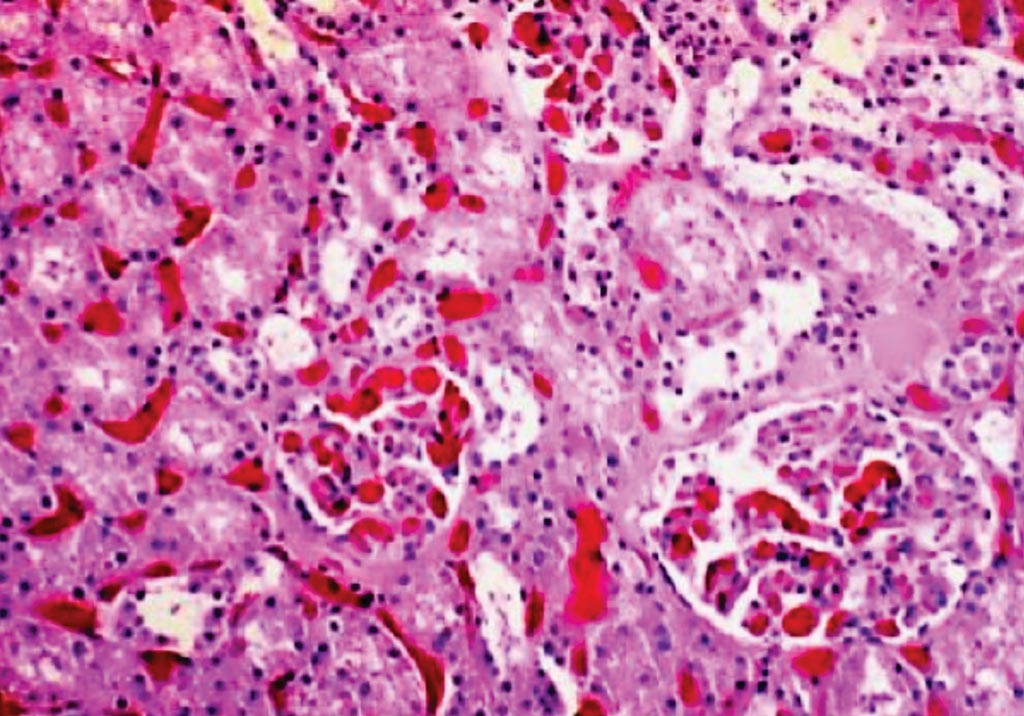Biomarker of Kidney Disease Identified in Sickle Cell Anemia
By LabMedica International staff writers
Posted on 27 Dec 2017
In patients with sickle cell anemia (SCA), urinary ceruloplasmin (CP) may complement urinary free hemoglobin as a noninvasive biomarker for chronic kidney disease. Ceruloplasmin is a ferrioxidase that is important facilitator of cellular iron export by ferroportin and of iron binding by transferrin.Posted on 27 Dec 2017
Hemolysis, vaso-occlusion, and ischemia-reperfusion injury are the clinical hallmarks of sickle cell disease (SCD). The renal manifestations of SCD range from various tubular and glomerular functional abnormalities to gross anatomic alterations of the kidneys. Chronic kidney disease (CKD) is a prevalent complication of sickle cell disease (SCD) and associated with early mortality. Hemoglobinuria is a risk factor for the development and progression of CKD.

Image: A histopathology of a fatal sickle cell crisis which resulted from sickling within the vasa recta within the kidney. Glomeruli are occluded by sickle cells (Photo courtesy of Dr. Vishai Ramteke).
Clinical scientists at the Howard University College of Medicine (Washington, DC, USA) conducted mass-spectrometry proteomic analysis on urine samples from patients with SCA and hemoglobinuria and six samples with high hemoglobin were compared to SCA control samples.
The team found that of 270 proteins that were initially identified, they researchers found that 48 were significantly up- or down-regulated in the samples with hemoglobinuria (P<0.0001). Subsequently, 18 extracellular proteins were focused on, including CP, a protein involved in iron metabolism. In SCA samples with hemoglobinuria, CP was present at much higher levels than that seen in SCA controls (P=1.8 × 10 −5).
The authors concluded that despite the increased urinary levels of ceruloplasmin, transferrin, and ferritin in the urine of SCA patients, only urinary CP demonstrated overall good correlations with chronic kidney disease (CKD) stage and urinary hemoglobin levels and represents a plausible noninvasive biomarker of CKD risk in SCA patients. The study was published on November 27, 2017, in the American Journal of Hematology.
Related Links:
Howard University College of Medicine













